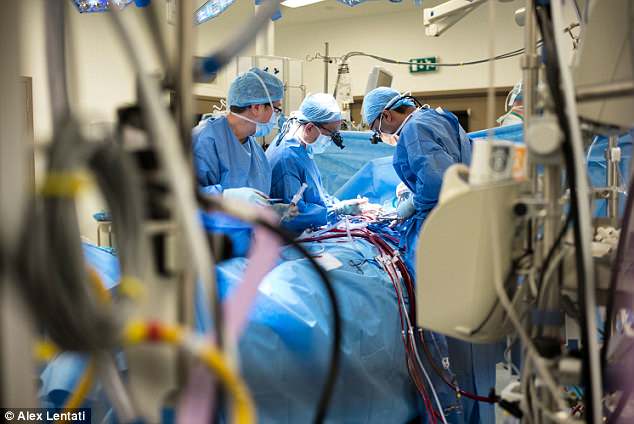Pioneering keyhole procedure that seals leaking heart valves using ‘Teabag’ wire could spare patients the ordeal of open surgery

People left breathless and even housebound by a common heart condition can now benefit from a pioneering keyhole procedure that spares them the ordeal of open surgery.
The new technique could treat some of the half-million Britons who have problem with a heart valve – the part that ensures blood is pumped round the body in the right direction.
The new technique tackles a problem called a ‘leaky’ valve, which affects the mitral valve on the left of the heart.
This often occurs due to a weakness in the heart muscle – usually triggered by a heart attack – that causes the valve to stretch. In turn, the two parts of the valve that need to meet in order for it to close, known as leaflets, cannot do so.
This causes blood to ‘leak’ – flow back the wrong way – meaning that the damaged heart has to work harder to pump blood in the right direction.
A leaky valve also means that blood doesn’t move around the rest of the body efficiently, causing severe breathlessness, water retention and fatigue.
‘It can be very debilitating,’ says Dr Michael Mullen, consultant interventional cardiologist at Barts Health NHS Trust in London. ‘Some patients struggle to walk more than 50 yards because they become so breathless and can become virtually housebound.’
Traditionally, treatment has involved open-heart surgery to make the leaflets in the mitral valve meet again.
But, says Dr Mullen: ‘Many patients with leaking valves – most of whom have already had a heart attack – simply aren’t fit enough for it. They rely on medication alone, which is often not enough to control their symptoms.’
Now, a new procedure, performed for first time in the UK at St Bartholomew’s Hospital in London, is giving hope to those deemed too high-risk for surgery.
Rather than the patient being opened up, the leaky valve can be repaired via a 1cm incision made in the groin and by inserting a bracelet-like device called a cardioband.
Dr Mullen, who performs the procedure with his colleague Dr Simon Kennon, says: ‘This is the nearest we have got to emulating open-heart surgery, which is the most successful technique.’
Doctors reach the heart through a catheter inserted into a vein at the groin. The cardioband – a 10cm-long wire covered in cloth – is passed up to the heart through the tube. Using ultrasound and X-ray guidance, doctors attach the band to the base of the heart valve with up to 17 tiny screws.
The band is then tightened by reeling in the wire that connects the screws to form the valve into a C-shape, rather like pulling the drawstrings on a teabag.
This corrects the enlarged opening of the valve allowing the leaflets to meet properly and reduce the leakage. ‘Most patients will only need a one-night stay in hospital and should feel better almost immediately,’ says Dr Mullen.
Richard Pepper, 70, a retired database administrator from Chelmsford, was the first patient in the UK to have the new procedure. He said: ‘I was always breathless and spent most of my time sitting down.
‘Despite having the procedure only at the end of March, I’m already so much better. I’m no longer spending my days breathless and slumped in an armchair. I’m gardening again – I’ve got my mojo back.’

 Accessibility options
Accessibility options Translate the page
Translate the page